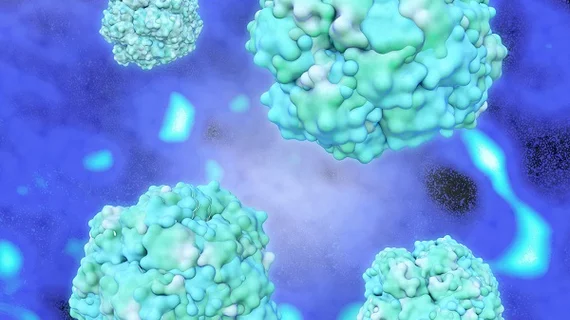Australian researchers have developed a new approach that can customize cancer therapy based solely on one molecular imaging exam, according to a new study.
The technique uses a single-photon emission computed tomography/CT scan performed after treatment to estimate how much radiation a patient’s tumor and at-risk organs will absorb.
This dosimetry driven method is a marked improvement from current applications, which rely on multiple SPECT/CT scans and fixed amounts of a radionuclide.
John Violet, PhD, a radiation oncologist at the Peter MacCallum Cancer Centre in Melbourne, Australia, said the tailored approach could vastly improve cancer therapy, sharing the development in the Journal of Nuclear Medicine
“The routine application of radiation dosimetry would be an important step in achieving the goal of ‘dosimetry-led’ treatment, providing significant improvements in both the safety and efficacy of treatment,” Violet added in a statement. “The adoption of routine dosimetry across molecular imaging and nuclear medicine in general would be a major advance in the field for both the clinical application of established therapies and the optimization of novel treatments.”
For their research, the authors administered 77Lu-PSMA-617 to 29 patients and performed SPECT/CT exams at four, 24, and 96 hours to characterize tracer pharmacokinetics in tumors and in normal tissues of interest.
They were able to determine three-dimensional volumes of interest using first image volume and then developed a method to assess each subregion and gauge how contrast moved throughout these critical areas of the body.
Using this data to create a prostate-specific membrane antigen clearance model for tumor and healthy organs in prostate cancer patients, the team found it was indeed possible to estimate radiation absorbed dose from a single image. Such information was most accurate when exams were complete after 72 hours and within the first two days of treatment.
“This work shows for the first time that following Lu-PSMA administration, it is possible to determine a good estimate of activity and absorbed dose with just a single measurement,” Violet said. “Simplification of dosimetry methods to make them a routine application would greatly assist in developing radiobiological models specific to Lu-PSMA, and other radionuclide therapies, allowing optimization of therapy for individual patients that are maximally effective and safe.”

